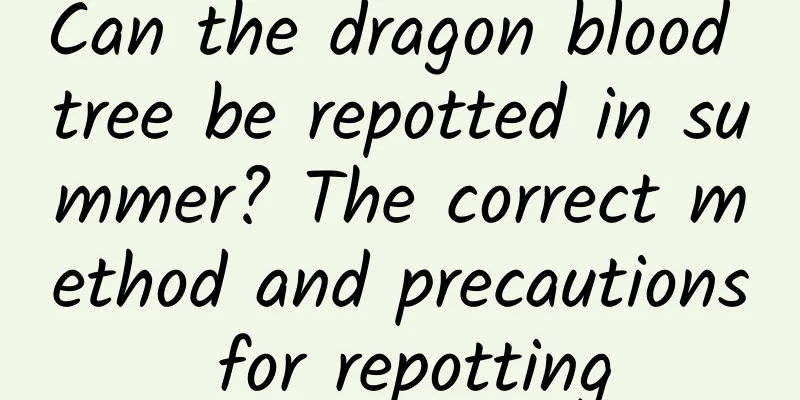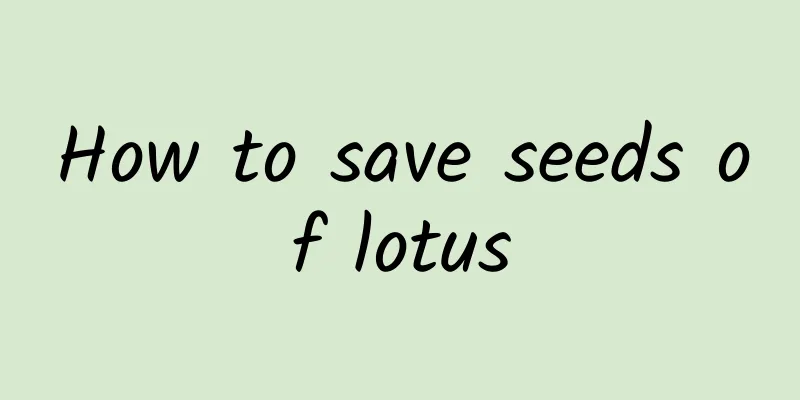How to grow Australian fir

1. Maintenance methods1. Temperature: It grows vigorously within the temperature range of 20-30℃. However, if it is in a too hot environment, its growth will be weakened, so it is best not to exceed 32℃. In addition, it is also a plant that is not cold-resistant, so try to keep it above 10℃. 2. Light: It is a light-loving plant, but it also has good shade tolerance. In addition, it is afraid of strong light. Based on these habits, it can be shaded in summer or placed in a cool place. In other seasons, it can be placed in a sunny place. 3. Watering: It likes moisture and is very afraid of drought. Sufficient water must be provided, and you cannot wait until the soil becomes completely dry before watering. In summer and winter, water needs to be controlled appropriately and not overwatered. 4. Fertilization: once or twice a month. The main fertilizers used are those containing nitrogen and potassium. No fertilizer is required in summer and winter. 2. Breeding techniques1. Reproduction: The main method used is seed propagation. This method of reproduction is the most widely used, but it takes a longer time. First, you need to select suitable seeds and remove the insect-infested and shriveled seeds. After that, choose sandy soil or garden soil as the substrate. After sowing the seeds, cover them with a layer of substrate about one centimeter thick. Then water it thoroughly and place it in a shaded location. 2. Pruning: Australian fir can be used as bonsai, and pruning is very important for bonsai. Pruning can be done frequently to shape the tree. Since the Australian fir grows vigorously and has fast regeneration ability, it is relatively resistant to pruning. In addition, pruning of some dry branches is necessary, whether it is bonsai or planted in the ground. 3. Problem diagnosis and treatment1. Disease: May have "anthracnose". It is easy to occur in summer, and it is necessary to use chlorothalonil in time for prevention and control, and ventilate frequently. 2. Pests: There are fewer pests, but there may be scale insects, which can be controlled with pesticides such as cypermethrin. It also requires more ventilation and more light exposure to increase its disease resistance. IV. Other issues1. Toxicity: It is non-toxic, and it has very strong purification ability. 2. Can it be grown at home? Australian fir can be used as a bonsai and is very suitable to be placed at home. It can not only be used for viewing, but also purify the surrounding environment. |
<<: When to take cuttings of hydrangea
>>: How to breed Brazilian iron
Recommend
Is the money tree a shade-loving or sun-loving plant?
Does the Money Tree prefer shade or sun? The mone...
What should you pay attention to when climbing roses bloom?
Variety selection Climbing roses actually bloom q...
When and how to repot Phalaenopsis, how to water Phalaenopsis after repotting
1. Time to change pots The best time to repot Pha...
The efficacy and function of yellow peel fruit
effect Kumquat is also a medicinal material with ...
What to do if winter coral does not bear fruit
Reasons why winter corals do not bear fruit Some ...
Can peonies be planted in northern courtyards (how to manage peonies in northern courtyards over the winter)
Peonies can be planted in the north of China . Pe...
Maintenance tips for Cleome
Cleome in pots It is not very difficult to plant ...
Is corn a fruit or a vegetable?
Is corn a fruit or a vegetable? Corn is neither a...
What are the hardy succulents?
1. Chiva Lotus This kind of succulent is also rel...
Does the tiger lily bloom?
Tiger Piranha blooms but with restrictions The fl...
How to grow lucky bamboo in water? What should I pay attention to?
Lucky bamboo is generally maintained by hydroponi...
Feng Shui Effects of Money Tree
one. balcony: 1. In everyone's house, the bal...
How to propagate bamboo and what to pay attention to
How to propagate bamboo The ways of propagating b...
Garlic planting method and time high-yield cultivation technology
Suitable time for planting garlic Garlic is plant...
What to do if the camellia grows crooked
1. What to do if the whole body is crooked (1) Th...









